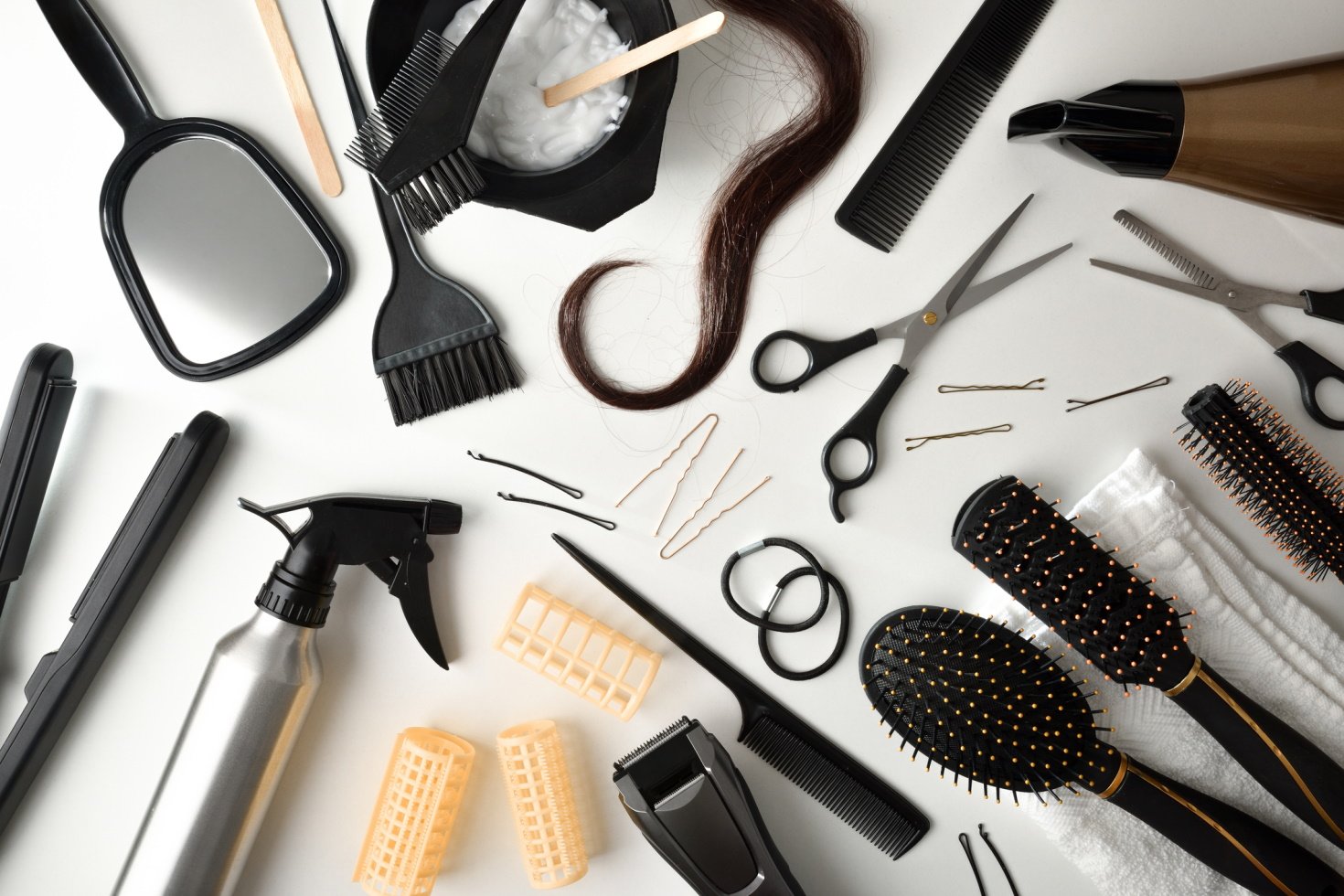Salon • Inspiration
Brush Up on Hair History: The Surprising Origin of the Tools of the Trade

By Shanalie Wijesinghe . Sep.30.2022
Share Article
We’re celebrating National Hair Day by looking back at some incredible advancements in haircare equipment
October 1st marks National Hair Day. While this celebration of all things haircare began in 2017, the origins of the tools it celebrates go back thousands of years. From millennia-old hair combs made of animal bones to high-end ceramic, ion-emitting implements, the pace of innovation is ever accelerating. To celebrate the tools that make hairstyling possible, we’ve compiled a list of some historical advancements across a few of the most important products in a stylist’s arsenal. Read on to see how far we’ve come, and where we may be heading.
Brushes and combs
Hair combs have been around for over 5,000 years, with evidence of use among ancient Egyptians and Persians. Multiple civilizations used animal bones for combs. The general shape has stood the test of time, but these days, materials like plastic, metal, wood, and acetate are more likely to grace a stylist’s table. Hair brushes took a leap forward when Lyda Newman patented a synthetic brush on November 15, 1898. Not only was it more durable than the animal hair brushes of the time, but it also included a removable compartment on the back for ease of cleaning.
Curlers and straighteners
Once again, Egyptians were at the forefront of this hair tool innovation. They developed bronze curling tongs over 3,000 years ago. By 1930, Solomon Harper had created thermo hair curlers, and half a century later, Theora Stephens patented an improved curling iron. Of course, while some folks are interested in curling, many others prefer the opposite. Ada Harris patented a hair straightening tool in November of 1893, building upon the idea Parisian salon owner Marcel Grateau had two decades earlier to style his clients’ hair using heated rods. In the years since, metal has been upgraded with ceramic coatings, floating plates, and ionic heating to limit hair damage.
Clips, pins, and shears
The bobby pin as we know it was created by Luis Marcus in California, and gained popularity shortly after World War I. Remarkably, its design is still in use today. Hairpins had been in use for thousands of years, but in 1901 Ernest Godward invented the spiral hairpin, a step forward that also led to advancements in hair clips, like the one Marnie Bjornson made in 1972 with a bendy clip that could snap into position by flipping from a concave to a convex shape. Although shears have been around for hundreds of years, there’s still room for improvement. Recently, swivel-handled shears have gained popularity as they allow for a more open hand and improved cutting posture, reducing risks of repetitive strain injuries.
Hair dryers
Hair dryers have come a long way since the days of Alexandre-Ferdinand Godefroy, who in 1888 patented a concept for heated air to be blown through a pipe into a dome over a person’s head. Before modern hair dryers, some folks would resort to attaching a hose to their vacuum cleaner’s exhaust end and using it to blow dry their hair. Thankfully, modern hair dryer technology has far surpassed vacuum attachment status. Dyson is using digital motors, air multiplying technology, and intelligent heat control. Some hair dryer brands even offer touch screen controls to easily choose the perfect settings, from heat level to frizz-reducing ions and beyond.
Want expert tips on how to outfit your salon and bring your brand vision to life? Our Complete Salon Equipment Guide is for you. Get your free copy now
Sign up for weekly blog updates.
